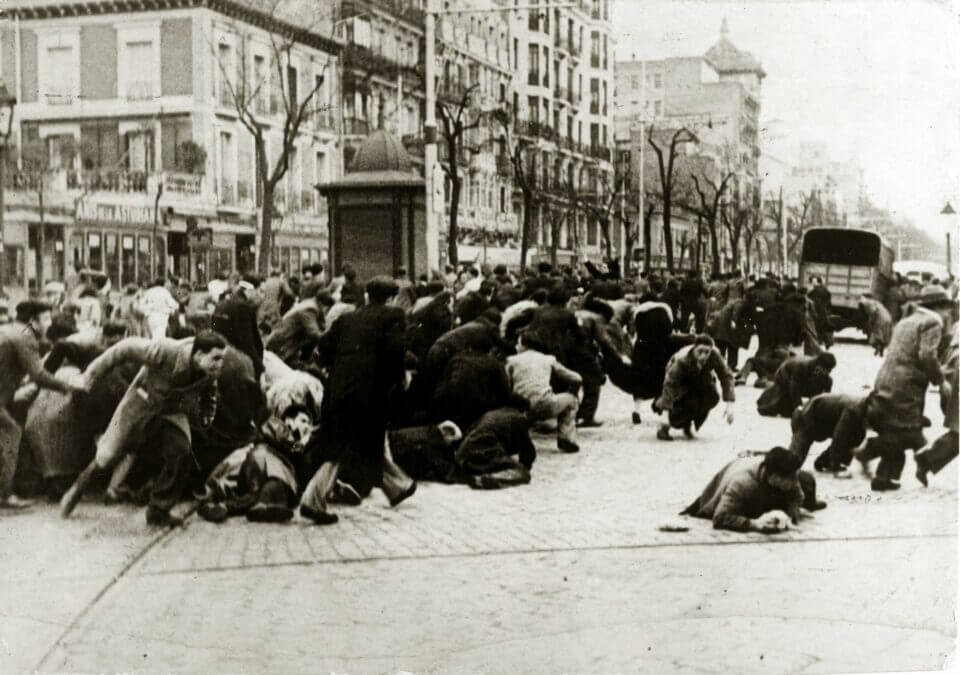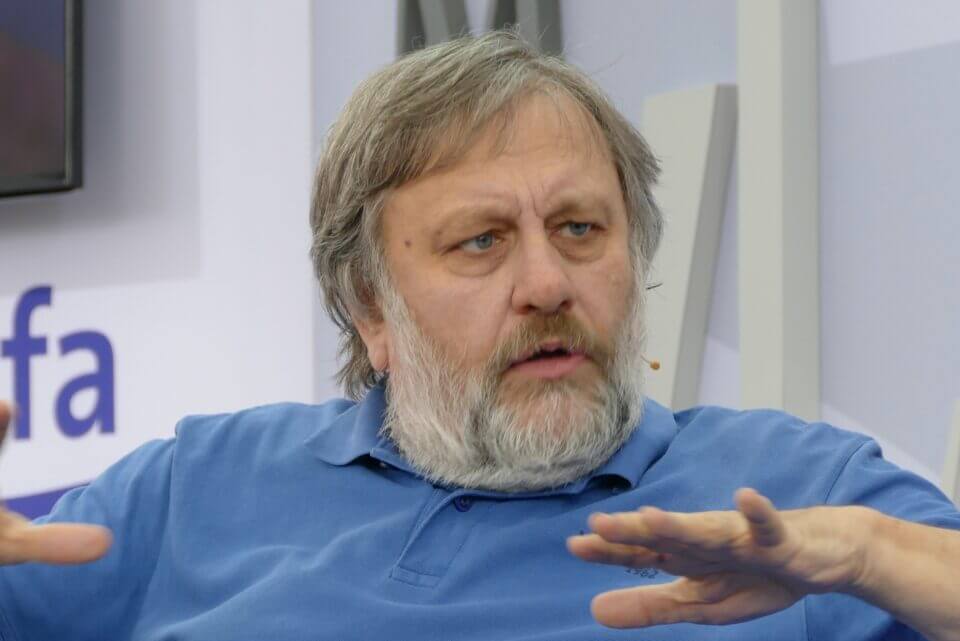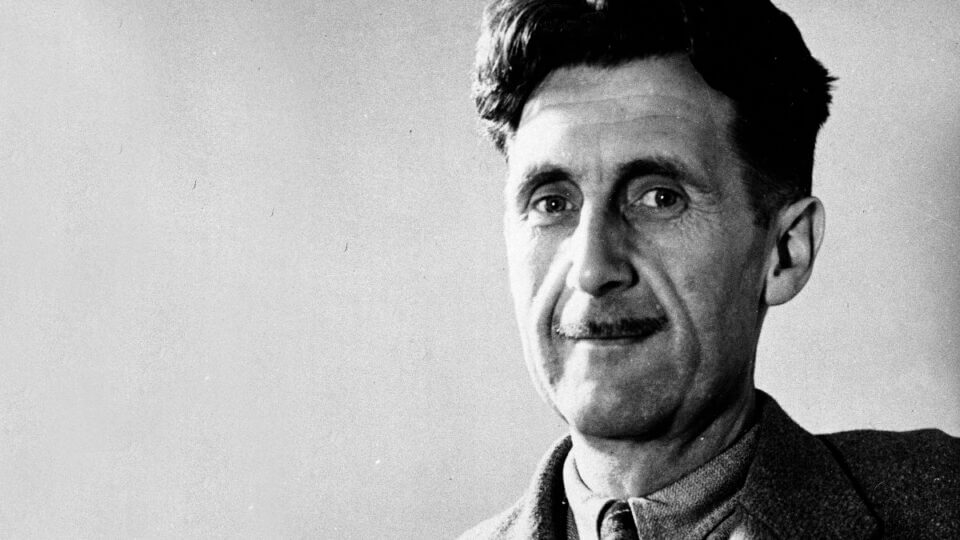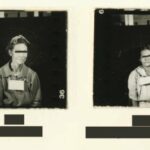
“The Second Spanish Republic has many parallels with modern American politics. Much like its counterparts in Spain, the American left of today is no less preoccupied with terraforming the cultural landscape.”
In his 1930 work History of the Russian Revolution, Leon Trotsky wrote that “[t]he attacking side is almost always interested in seeming on the defensive. A revolutionary party is interested in legal coverings.” To seize power, radicals often advance under the guise of seeking rather modest objectives, chief of which is to defend “democracy.” In doing so, they wield the democratic state—its elections, courts, and constitutional rights—to bludgeon their opponents, even though the end goal is to do away with pluralism itself.
Nowhere was Trotsky’s paradigm more evident than in the short-lived Second Spanish Republic of 1931-39. Spain entered the 20th century a shadow of its former self. Having lost Guam, Puerto Rico, Cuba, and the Philippines to the United States in 1898, Spain ceased to be a major colonial power, marking the end of a long decline that had begun when Spanish colonies in the Americas declared their independence after Napoleon invaded the Iberian Peninsula. As a neutral nation in the First World War, Spain avoided much of the ensuing unrest that toppled empires and unleashed large-scale partisan violence elsewhere in Europe. Spanish society was nevertheless rife with ideological and economic tensions, made worse in the 1920s by Madrid’s protracted war against Berber tribes in the Rif region of northern Morocco.
Although a few liberal reforms, such as universal suffrage for men, managed to take hold in the 19th century, Spain remained largely rural and Catholic. The industrial revolution failed to penetrate Spain to the same extent as it did much of Western Europe. By 1930, agricultural workers, most of whom were impoverished peasants toiling under a handful of wealthy landowners, still accounted for nearly half of the population. The literacy rate stood at a mere 71%. In comparison, literacy in Great Britain was around 80% in 1860. While the countryside stagnated, urban areas saw the rise of militant labor movements that frequently employed violent strikes and assassinations.
The crisis finally boiled over in January 1930, when economic recession led to the collapse of General Miguel Primo de Rivera’s seven-year dictatorship. Unable to find allies competent enough to prolong the monarchy, King Alfonso XIII fled the country in April 1931 after elections brought to power a coalition of socialist and republican parties.
The provisional government’s decision to convene on July 14th, the day Parisians stormed the Bastille in 1789, was no coincidence. Like their precursors in the French Revolution, the architects of the Spanish Republic immediately set about dismantling the pillars of the old regime. A new constitution passed in December 1931 legalized divorce, established women’s suffrage, and recognized the autonomy of culturally distinct regions in Spain. Most controversial were efforts to undermine Catholicism. The constitution abolished state subsidies to the Church and dissolved religious orders like the Jesuits. Catholics were banned from offering education. Subsequent legislation confiscated Church property and allowed the state to veto clerical appointments. Prime Minister Manuel Azaña claimed that “Spain has ceased to be Catholic.” Meanwhile, mobs took matters into their own hands. May, 1931 saw churches being burnt throughout major cities, including Madrid, Seville, Cádiz, and Alicante. The situation was such that Pope Pius XI issued an encyclical titled Dilectissima Nobis (“On Oppression of the Church of Spain”) in protest.
Historian Stanley Payne noted the contradiction in a Republic ostensibly committed to the protection of universal civil liberties yet displaying such sheer animus toward traditional institutions, whatever faults they may have had: “[The governing coalition’s] aim was not merely reform or establishment of a new democratic consensus, but rather paying off old scores and building a sectarian leftist regime.” Frances Lennon wrote that vindictive policies “virtually destroyed any prospect there had been for the development of a Catholic, conservative, Republicanism.”
Having antagonized the Right, the Republic soon found enemies to its left. At this stage, the Spanish republicans and their socialist partners still subscribed to the Leninist strategy of “vanguardism,” whereby the most enlightened elements of society were to lead the charge in a revolutionary struggle. In his manifesto “What Is To Be Done?,” Vladimir Lenin criticized left-wing activists who preferred to operate independently of the vanguard. “A person who is flabby and shaky on questions of theory, who has a narrow outlook, who pleads the spontaneity of the masses as an excuse for his own sluggishness…is not a revolutionary, but a wretched amateur!” “[O]ur task is not to champion the degrading of the revolutionary to the level of an amateur,” Lenin wrote. Likewise, the Republic’s leadership, according to Helen Graham, “belonged to an old political world that was, at heart, uneasy with the idea of mass mobilization.” Republicanism, while seeking to redistribute socio-economic power, “was also conservative in that modernising reform was envisaged as something to be implemented top down by a political elite via the machinery of the state.”
Republican discomfort with spontaneous radicalism was on display in the aftermath of the passage of the 1932 Agrarian Reform Bill. Reflecting its authors’ deference to bourgeois formalities, the bill created 13 categories of land to be expropriated depending on size, location, cultivation status, and the goods produced. Agrarian reform was plagued from the onset by a lack of funding and bureaucratic expertise to combat landlord resistance. The plan was to resettle some 60,000 to 75,000 families per year on confiscated plots. Yet, only 12,260 families benefited at the end of two years. Having largely pushed for Soviet-style collectivization, the socialists felt that they had been co-opted into accepting inferior solutions, though they remained in league with the republicans until late 1933. On the other hand, far-left groups that were never part of the government resorted to armed insurrection. The year 1932 saw sporadic outbreaks of violence in Catalonia, Valencia, and Andalusia. In January of 1933, farm workers belonging to the anarchist National Confederation of Labor (CNT) rioted in the town of Casas Viejas, Cádiz Province. Police shot prisoners and burnt houses where insurgents barricaded themselves inside.
The heavy-handed response at Casas Viejas, which left 22 workers dead, further delegitimized the Republic among already frustrated leftists, though a right-wing resurgence soon forced them to redirect their vitriol. In October of 1933, the socialist-republican alliance broke down, and new elections were held in November. Running on a Catholic traditionalist platform, the Spanish Confederation of the Autonomous Right (CEDA) led by José María Gil-Robles emerged as the largest party in parliament. To the dismay of monarchists and others on the extreme right, CEDA never advocated for an overthrow of the Republic, notwithstanding Gil-Robles’ stated intent to amend the constitution and facilitate a more conservative-friendly “new state.” While some republicans, most notably Alejandro Lerroux’s Radical Party, joined forces with CEDA after their split with the socialists, the Left generally balked at what they saw as a “fascist” victory. Referring to CEDA, socialists in Zaragoza “called for the amputation ‘of all parts of the body politic found to be gangrenous,’ and in particular those representing right-wing sponsors of ‘violence, blood and concentration camps.’”
In the highly polarized climate of the 1930s, rhetoric informed direct action. The campaign and election day itself tallied a total of 27 dead and 58 seriously injured, a quarter of which were CEDA-affiliated personnel. Socialists, communists, and anarchists, often aided by local officials, caused more than half of the casualties (15 dead and 34 injured), whereas CEDA supporters were responsible for only one death and eight injuries. Stanley Payne argued that the violence, as potent as it was, did not yet imperil the system that existed since 1931. Leftist militants were simply taking advantage of a weak and confused regime that more or less shared their disdain for the Right.
The marginalization of CEDA continued after the election. Pressured by the socialists, President Niceto Alcalá-Zamora initially declined to work with Gil-Robles. Lerroux instead became Prime Minister and headed a minority government until October of 1934. When he finally awarded CEDA three cabinet positions, the Left reacted by orchestrating one of the largest episodes of civil unrest in Europe to date. Fearing a fascist takeover, the Spanish Socialist Workers’ Party (PSOE) and its industrial wing, the General Union of Workers (UGT), assembled a nationwide strike. The revolt quickly fizzled out due to poor coordination, though it gained momentum in the province of Asturias. There, the UGT and the anarchist CNT formed a tentative alliance, setting up revolutionary communes that abolished money, captured weapons, and murdered Catholic clergy. A prominent case of anti-clerical violence occurred on October 5th, when rebels in Turón forced their way into the local Brothers’ School and sentenced nine congregants to death, including a Passionist priest. Troops were deployed to pacify the region, and the ensuing battle saw 2,000 people killed over a span of two weeks.
Influential voices on the Left celebrated the rebellion. French novelist André Malraux, who later served as Minister of Cultural Affairs under President Charles de Gaulle, decried the Spanish army’s repression in Asturias. His colleagues sent telegrams to Prime Minister Lerroux demanding the release of imprisoned “anti-fascists.” The Soviet-backed Communist International (Comintern) distributed pamphlets titled “For the Support of the Heroic Anti-Fascist Struggle of the Spanish Toilers.” Romain Rolland, a Nobel Prize recipient and admirer of Joseph Stalin, wrote in the communist paper L’Humanité: “From the bloody mountains of Asturias will launch the victory of the proletariat of Europe, which will cover the world of [sic] his wings.” Philosopher Albert Camus even produced a play titled Révolte dans les Asturies (“Revolt in Asturias”) in which he portrayed the Asturian workers as desperate individuals fighting to overcome the injustices that they had for so long endured.
Others attacked the Spanish state for being insufficiently left-wing. Writing for Foreign Affairs, Spain’s ambassador to Germany, Luis Araquistáin, protested his government’s alleged subservience to the political right. “[A] petty bourgeois party, placed between the power of the upper middle classes who control the state, and the mass of the class-conscious workers, is ineffective in revolution and always surrenders to the strongest side.” Similarly, the Comintern decided that by “reject[ing] the frequent proposals of the Communists for united action against the offensive of the bourgeois-landlord reaction and fascism,” the socialists in power had “passed election laws which enabled the reactionaries to gain a majority in the Cortes (parliament)…laws under which the heroic miners of Asturias are now being tried.”
A panic over fascism pervaded leftist dialogue on Spain, reflecting the fallout of contemporary events. Adolf Hitler’s rise to power in 1933 led to mass arrests of German communists. The establishment of a dictatorship in Austria under Chancellor Engelbert Dollfuss was another significant setback for the international left. So grave was the threat that the Comintern dropped its habit of maligning all non-communists—a quest for ideological purity that ironically benefitted right-wing movements by dividing opposition on the Left. Rather than denounce moderate socialists and social democrats as “social fascists,” communists were to form a broad coalition with them. The fact that the Communist Party of Spain (PCE), with only one seat in parliament, had a marginal influence did not prevent the Spanish left from independently forging its own Popular Front. After all, the socialist PSOE had made provisions for Alianza Obrera, an alliance of leftist parties and workers’ organizations, during the 1934 general strike, which preceded the Comintern’s formal endorsement of Popular Front tactics in July 1935.
When a gambling scandal sank the Lerroux government in late 1935, President Alcalá-Zamora, still hesitant to let CEDA take the reins, called new elections for February of 1936 despite parliament having another two years left in its tenure. The Popular Front, made up of the PSOE, communists, and leftist republicans, won 265 seats out of a total of 473, becoming the single largest bloc in parliament. The CNT and other anarchist cells abstained, though they approved of their members voting for the Popular Front. President Alcalá-Zamora’s caretaker cabinet resigned before the votes could be fully counted, leaving the newly sworn in Popular Front government to oversee the certification process. The Republic then presided over spontaneous land seizures, escalating street violence, and amnesty for those involved in the 1934 rebellion—one such person being Catalan separatist Lluís Companys, who proclaimed an independent Catalonia in October of that year. On July 13, 1936, to avenge the assassination of a police lieutenant with socialist ties by the fascist Falange, the police shot dead José Calvo Sotelo, chief spokesperson for the right-wing opposition in parliament. Among the assailants were members of the PSOE.
Calvo Sotelo’s death was the last straw for the Right. On July 17th, conservative elements in the army led by Generals Emilio Mola and Francisco Franco, who had agreed to launch a coup in the months prior, rebelled in Spanish Morocco. The rebellion plunged Spain into a three-year civil war that ended in 1939 with Franco’s forces defeating the Republic and installing a dictatorship that lasted until 1975.
The Second Spanish Republic has many parallels with modern American politics. Much like its counterparts in Spain, the American left of today is no less preoccupied with terraforming the cultural landscape. Efforts to promote Critical Race Theory and gender ideology, regardless of their merits, have alienated large numbers of ordinary Americans. Christianity, to the extent that it is practiced by white Americans, is associated with racist and sexist oppression, mirroring how the Spanish left viewed Catholicism as a tool for reactionary monarchists. Moreover, resistance to the revolution is presumptively illegal. “Our Democracy,” a staple in progressive discourse, masks a blanket refusal to acknowledge the legitimacy of former President Donald Trump, much less his supporters’ concerns. A popular vote for the Right is tantamount to fascism.
The Left has also shown itself to consist of two prongs. One is a self-anointed vanguard class of elite policymakers and intellectuals whose zeal to remake society from above is tempered only by its adherence to the democratic process, the rules of which it leverages against its adversaries. The other is a patchwork of extremists seeking to coerce change through violence and intimidation. The former intends to cement its vision within existing institutions, steadily gaining ground with each election and court ruling. The latter despises institutions and aims to devour the former. In the words of Marxist poet Amílcar Cabral, “to truly fulfill the role in the national liberation struggle, the revolutionary petty bourgeoisie must be capable of committing suicide as a class in order to be reborn as revolutionary workers.”
Despite these differences, the two prongs share a mutual enmity toward tradition, making for an odd alliance. In Spain, socialists and republicans, after having brutally crushed the far-left for daring to rise up against the system they designed, enlisted their erstwhile enemies in a Popular Front to effect a power grab. Once victory was achieved, leftist militants were set loose on the Right, while moderate leftists in the government used their influence to provide cover for the mayhem.
A similar arrangement, albeit informal, exists in the United States. Following the death of George Floyd, as tragic and unjust as it was, progressive journalists and elected officials downplayed the rioting that had caused 19 deaths and nearly $2 billion in property damage nationwide. Glowing depictions of anti-police protestors coupled with condemnation of basic measures to maintain order echoed the response to Asturias. No less a figure than President Joe Biden has dismissed the impact of radical groups like Antifa. So have representatives Jerry Nadler (D-N.Y.) and Cori Bush (D-Mo.), even though studies have shown that Antifa involvement in protests produced a seven-fold increase in injuries. Lawless behavior often received absolution where avowedly-progressive district attorneys have been elected. In cities such as Dallas, Philadelphia, Los Angeles, and Houston, prosecutors dropped over 90% of charges against protestors. Likewise, college administrators in some cases have turned a blind eye as student agitators harassed faculty who criticized the Left’s excesses. The same faculty were then disciplined for such crimes as the “flagrant disregard of the standards, rules, or mission of the University,” showing how illiberal actors that have captured otherwise liberal institutions can weaponize their governing principles to punish dissent.
Liberal democracy, owing to its ability to constrain power, too often deludes one into thinking that the pursuit of power as such no longer exists and that politics is driven primarily, if not solely, by an altruistic desire for public service. The Second Spanish Republic warns against such complacency.
Guzi He is a J.D. candidate at the American University Washington College of Law. He holds a B.A. in Government from the College of William and Mary and is fluent in Mandarin Chinese.











